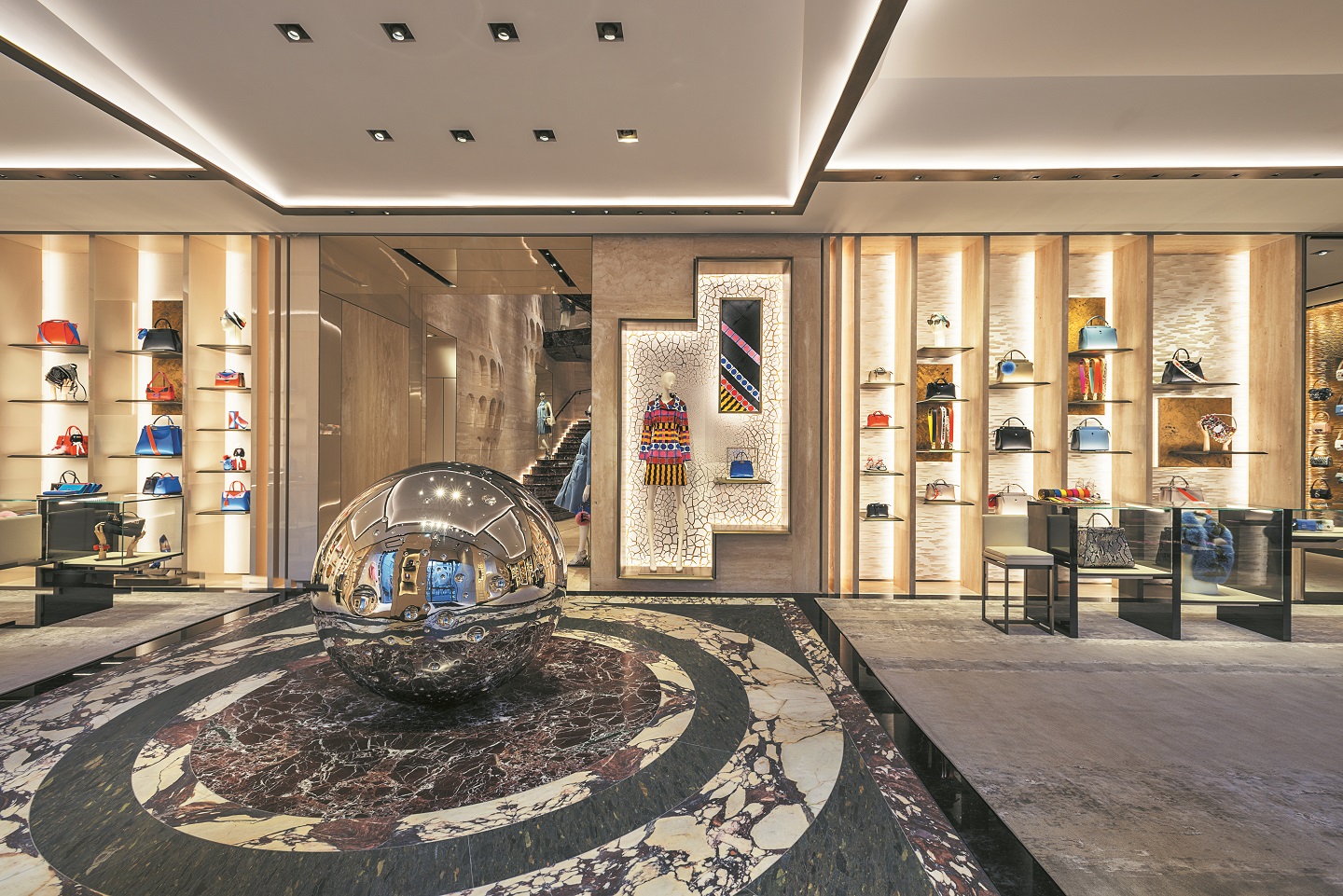
A sculpture by Giuseppe Penone Foglie di Pietra — Leaves of Stone is perched near the entrance (All photos: Fendi)
Palazzo Fendi is a flagship boutique like no other. The façade of the five-storey edifice remains faithful to its historic landmark status and within lies a treasure trove of Fendi’s creations. Located at the intersection of Via del Corso and Via della Fontanella di Borghese in the historical centre of Rome, it is not far from the birthplace of the world renowned luxury brand — the first handbag store and fur workshop established in the Via del Plebescito by Edoardo and Adele Fendi in 1926.
The original structure of Palazzo Fendi dates back to the 1700s but it has gone through various changes over the centuries. Today, it houses a two-storey boutique with an in-house fur atelier, Palazzo Privé (a private space reserved for the brand’s most esteemed customers), a boutique hotel that is the ultimate dream of any Fendi Casa fan and contemporary Japanese restaurant and rooftop bar, Zuma, to top things off with a dash of international pizzazz. The largest of its boutiques worldwide, it could be the most breathtaking one, designed with that touch of je ne sais quoi that is so quintessentially Fendi.
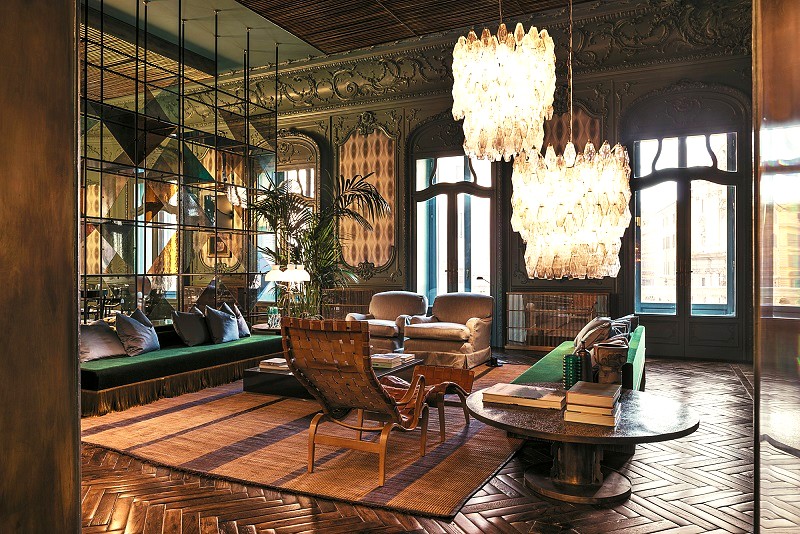
As it is with the brand’s creations, the beauty of the flagship boutique lies in its details, as I discovered on a recent visit to Rome for the unveiling of its new timepiece collection, Forever Fendi. From afar, one can spot five arched exterior windows that represent the five letters of the brand’s name. A sculpture by Giuseppe Penone Foglie di Pietra — Leaves of Stone, which recalls the various phases of the capital city from the fragmented ruins of the classical era to the bronze and marble of baroque Rome and more — is perched near the entrance. This is not the first time that the brand has reaffirmed its commitment to the arts, culture and the city of Rome. In 2013, the Fendi for Fountains initiative was launched to restore some of the city’s most important fountains.
Stepping inside the store, a concentric circle configuration underfoot, created by an intricate intarsia of precious marbles, pays homage to the geometric pattern found in St Peter’s Basilica, while the use of travertine — traditionally associated with classical roman monuments and architecture — represents continuity with the past and the glory of Rome. A staircase cut from striking Lepanto marble beckons customers to the upper floor where more masterpieces await.
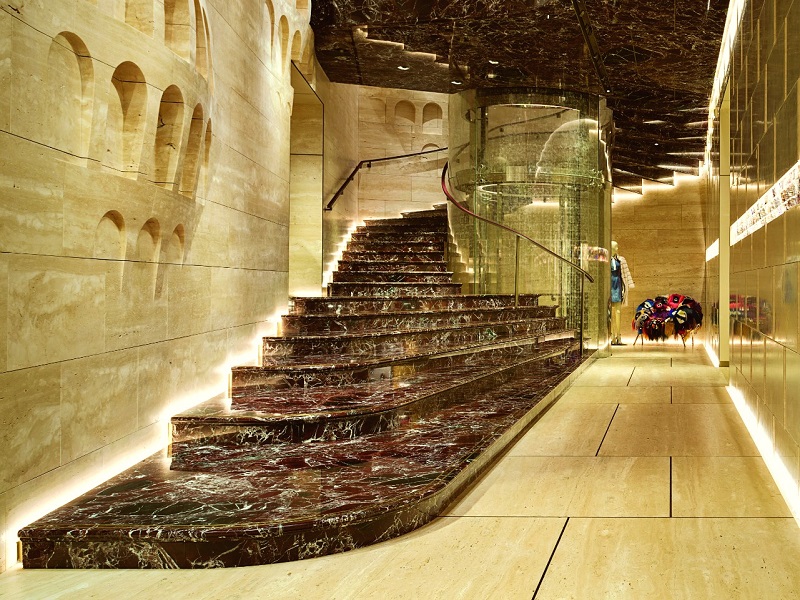
Occupied by the brand for retail and office purposes since 2004, the Palazzo’s 2016 reopening unveiled to the world the historic and artistic elements that form the backbone of the brand. Its over nine decades of history is inextricably linked to Rome, and Palazzo Fendi captures this heritage beautifully. From the original Karl Lagerfeld sketches on the walls and fur wall-art pieces, representing its artisanal savoir faire, to the works of Augustu Banalini adorning the hallway of the exclusive Palazzo Privé and a Russian mink day bed by Dimore Studio of Privé designers Emiliano Salci and Britt Moran in its VIP changing room, it is certainly dressed to impress.
The big reveal of Forever Fendi takes place at the headquarters, Palazzo della Civiltà Italiana, alongside a display of timepieces from earlier collections. Walking into the showcase area, one may recognise two installations from Fendi’s Shape of Water Project, when designer Sabine Marcelis crafted 10 unique fountains inspired by 10 of the brand’s most iconic symbols and motifs. One of them is the Fendi FF Logo N.2, her second interpretation of the classic logo with coloured water bubbling inside a solid resin cube to reveal the carved out letters.
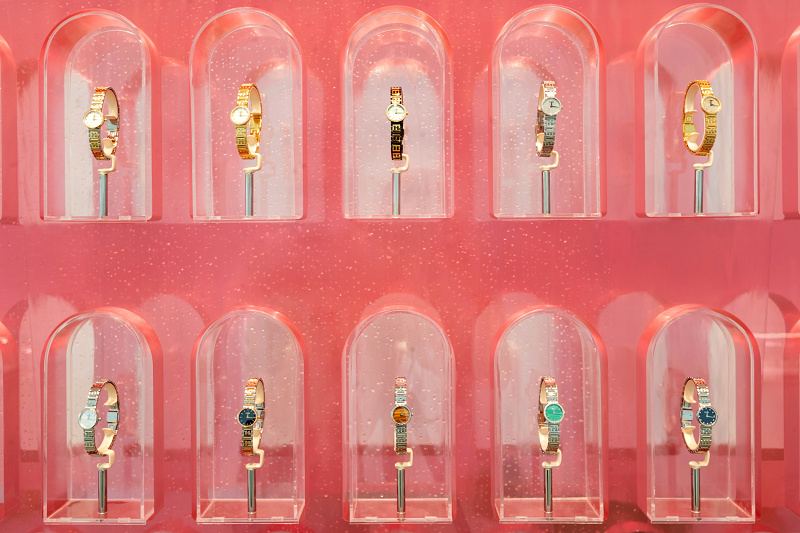
The star of the show, however, is the Palazzo della Civiltà Italiana piece, which is dedicated to the venue. Flowing water between the layers of the structure accentuates the delicate beauty of the Forever Fendi watches that are held within it.
In this collection, the double F logo, which was designed by Lagerfeld, takes on a new identity, representing Forever Fendi. Irresistibly delicate and elegant, the watches in this collection represent glamorous allure and are available in 19mm and 29mm variations, each crafted from exquisite materials. The curves of the watch case are enriched with a white diamond-set crown while the dials are enhanced with iridescent mother-of-pearl, genuine stones or polished lacquer to catch the light.
Creative director for accessories and menswear, Silvia Venturini Fendi, a member of the third generation of the Fendi family, sits down with us for a short interview after the launch. To Silvia, who is also the creative mind behind the reinterpretation of the iconic Selleria line and the creation of the Baguette bag, the wearer of Fendi watches is someone with a strong personality.
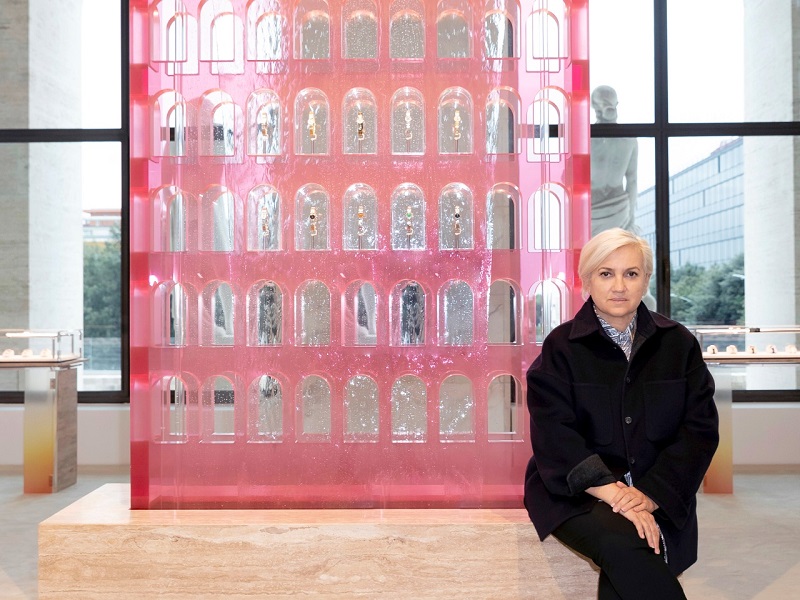
“Somebody who recognises quality and wants to have a statement piece. There are different versions because we do not have one specific woman in mind. Fashion should help men and women to express their personal style,” she says, using the popular, highly-customisable Policromia watches as an example.
Describing this particular collection, she says, “I like that Forever Fendi is a watch that has a bit of nostalgia because the little dial reminds me of an old-fashioned watch that, perhaps, your grandmother wore. But I also like the fact that it is coupled with a bracelet that has a streetwear feel to it. I think both of these things combined make something quite new.
“Today, the functional aspect of a watch is not as important as it was before because we have our mobile phones, which are very practical, to tell time. The watch is more of an accessory, a piece of jewellery.”
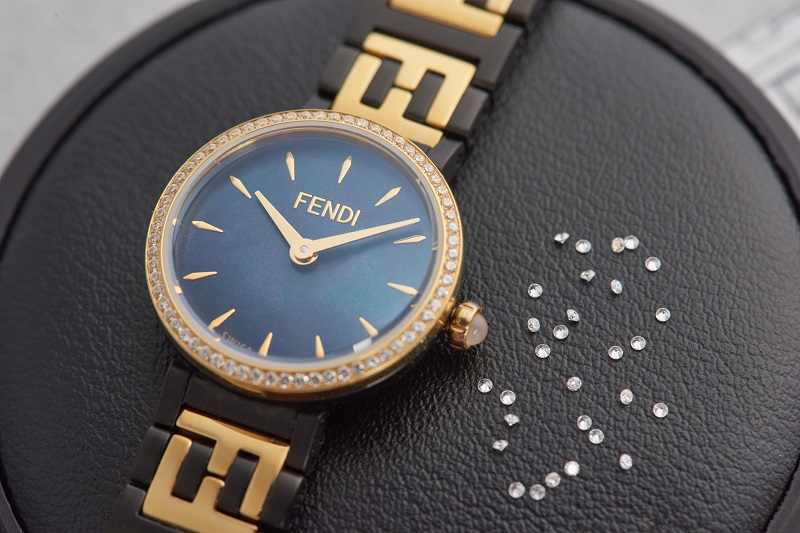
Besides the double F, these watches also feature another iconic Fendi aesthetic — colour blocking. Black stainless steel is combined with polished yellow gold-coloured stainless steel on the bracelet, which is designed to flow naturally around the wrist.
On the choice of material, she says: “The dial’s stones are very important. I like these stones because they are very Roman to me. If you go to any church, you will find these stones. The idea of using natural stones comes from that. I also like the fact that they are natural, precious and the colours are exquisite, like the eye of the tiger. I like stones that have veins ... it is like having life. I don’t like it when a stone is just flat and of one colour — it looks like plastic.”
Silvia shares that one of the changes since Fendi’s initial foray into watchmaking in 1988 is that its vision now “is to have the watches more closely linked to what we do in the fashion department”. She says Fendi watch buyers are typically the very same demographic that buys pieces from its fashion line.
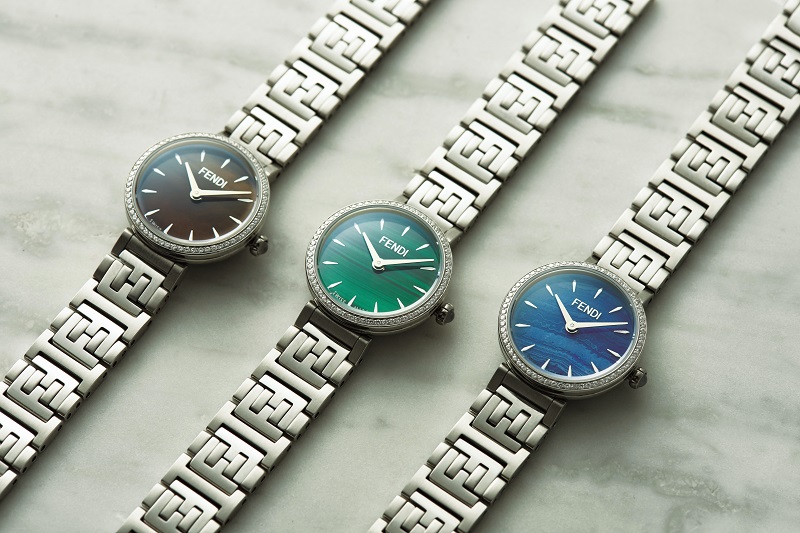
This time, the interlocking classic FF logo represents the name of the collection. “Logomania is evident in many of our creations and it was a must to have a watch to go with it. The Roman spirit is a part of Fendi’s DNA so as soon as you see double Fs you think of Fendi because everybody knows it.”
Despite having been involved in the creative and design process for years, Silvia is not in the habit of picking favourites and says the same applies to the present collection. “I try not to be attached to things. When it is done, it is done … I am more focused on the things that are on my desk, the work in progress.”
Interestingly, Silvia reveals that her choice for daily wear is the Policromia watch that she and her daughter jointly designed.
Granted, getting up close and personal with the ultra delicate Fendi Forever collection would have been a pleasure, regardless of the location, but there was something about experiencing the watches on the Roman maison’s home ground, and where the brand first planted its roots over 90 years ago, that made it even more special.
The article first appeared on Apr 8, 2019 in The Edge Malaysia.


